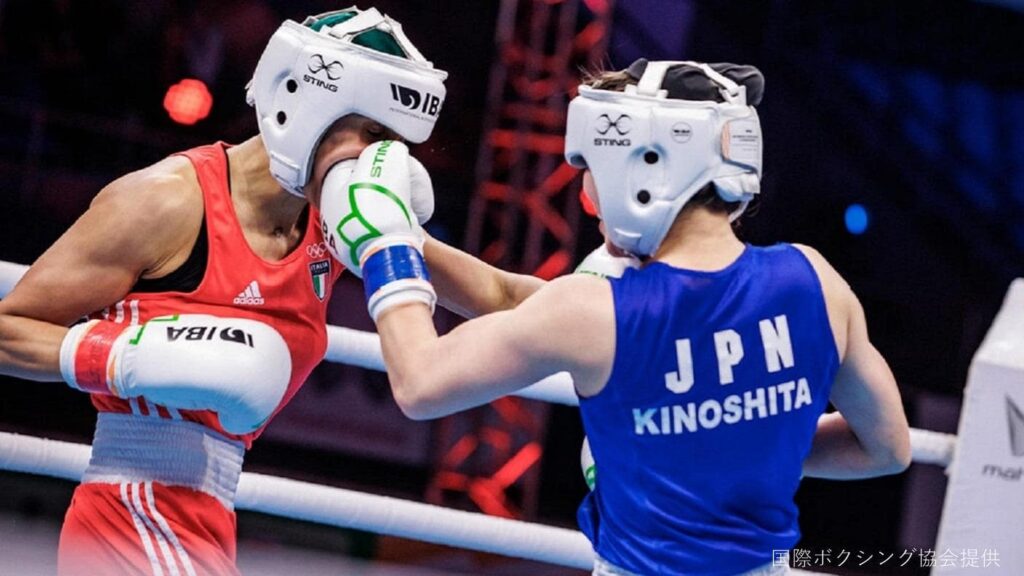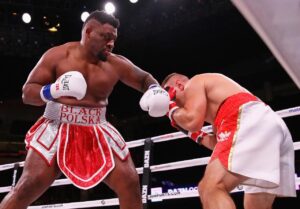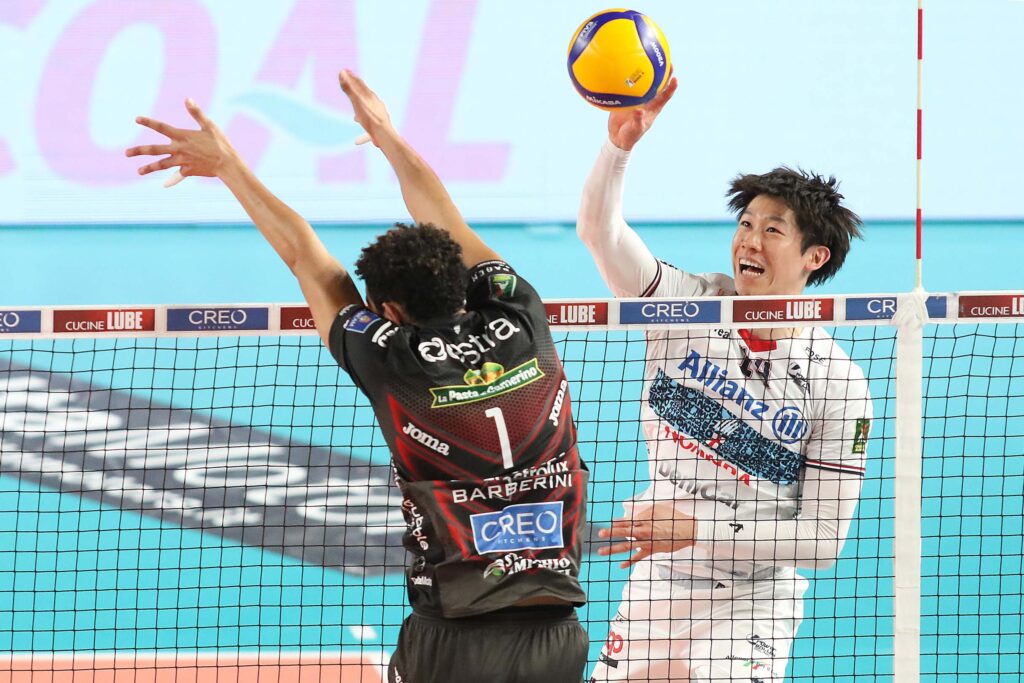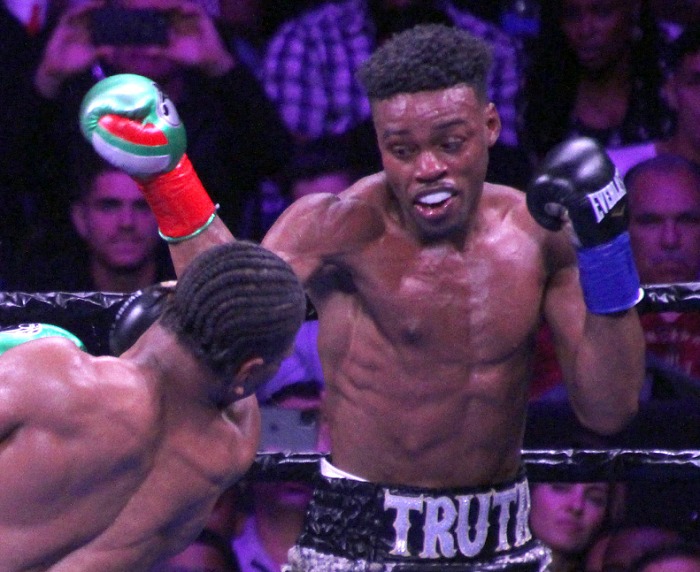
In order to outwit your opponent in the boxing ring, it is not enough to simply throw a powerful punch.
To become a true winner, instant judgment and skill are required, and counter-attacks are considered to be one of the most sophisticated tactics.
A counterattack is a technique that uses your opponent’s attack to counterattack. Mastering this technique will help you fight smarter and more effectively in the ring.
In this article, we’ll start with the basics of counterpunching in boxing and explain important techniques for turning your opponent’s attacks to your advantage.
目次
- 1 What is a counter?
- 2 Basics of Counter Punch: Counterattack Techniques in Boxing
- 3 What is the timing for an effective counter attack?
- 4 Positioning and footwork for counter punch success
- 5 Analysis of counter attack examples of top boxers
- 6 Training methods and practice tips to hone your counter punches
What is a counter?
A counter is a technique that uses an opponent’s attack movement to effectively counterattack against that attack.
This tactic refers to counterattacking quickly and accurately at the moment when the opponent’s attack is most vulnerable, such as immediately after throwing a punch or during the attack movement.
Counter punches are used to attack an opponent’s off-balance or find an opening for attack to gain an advantage.
Successful counters rely on good observation, accurate timing, and proper positioning.
If you can understand your opponent’s attack patterns and movement habits in advance, dodge their attacks, and launch effective counterattacks, you can turn the flow of the match in your favor.
There are many different types of counter techniques in boxing and other striking martial arts, such as jab counters, cross counters, and check hooks, each of which is used depending on the situation and opponent’s attack.
Counterpunching is an advanced technique that allows you to defend and attack at the same time, and is considered to be one of the most important tactics in boxing.

Basics of Counter Punch: Counterattack Techniques in Boxing
Counter punching is one of the advanced techniques in boxing, and is a tactic used to turn an opponent’s attack to your advantage.
This technique requires the ability to accurately read the opponent’s movements and quickly and effectively counterattack at the moment of attack.
Successful counterpunching relies heavily on observation, timing, and precise execution.
Basic principles of counter punching
- Improving your observation skills : It is important to understand your opponent’s patterns and read their attacks and movement habits. This makes it easier to identify counter opportunities.
- Precise Timing : Successful counterpunch depends on timing. It is important to counterattack at the moment when your opponent’s attack is most vulnerable, that is, immediately after throwing a punch or before launching an attack.
- Positioning and Footwork : To land an effective counter, you need the right distance and angle. Footwork is required to maintain a position where you can counterattack while remaining outside of your opponent’s attack range.
Types of counter punches
- Jab Counter : Replying to your opponent’s jab with your own jab. Simple but effective, allowing you to disrupt your opponent’s attacks.
- Cross Counter : Hit a powerful cross against your opponent’s jab. Timing is important, and it is an advanced technique that allows you to counterattack while avoiding your opponent’s attacks.
- Check Hook : Drive a hook from the side against the opponent’s forward movement. You can use your opponent’s movements to deal damage.
How to practice counter punching
Practice in sparring is essential to hone your counterpunching skills.
Test your timing and techniques to counter various attacks and improve your reaction speed by sparring with a partner.
In addition, when hitting the mitt, it is also effective to practice counter techniques while the trainer uses specific attack patterns.
Counterpunching can be a huge turning point in a boxing match.
By mastering this technique of turning your opponent’s attacks to your advantage, you will be able to fight more calmly and dominantly in the ring.

What is the timing for an effective counter attack?
The success of a counter attack is highly dependent on its timing.
To unleash an effective counter, you need the ability to decipher your opponent’s attack patterns and determine the optimal moment to counterattack.
Below are some key points about the best timing for counterattacks.
Just before the opponent’s attack is completed
When your opponent throws a punch, there is a momentary gap at the end of the movement.
At this moment, the opponent is in a transition period before launching a new attack, and their defense is weak, so it is a perfect opportunity for a counter attack.
The moment you predict your opponent’s attack
By anticipating your opponent’s attack before it starts, or when it’s about to start, you can launch an effective counter by taking the first move.
To do this, you need to be familiar with your opponent’s movement patterns and habits.
When the opponent shifts their weight
The movement of shifting weight to the front legs for an attack leaves the opponent vulnerable.
The key to an effective counterattack is to catch this moment of weight shift and counterattack before your opponent regains balance.
When your opponent overreaches
If your opponent “overreaches” by pushing his body too far forward when throwing a punch, you will be neglecting your own defense.
By taking advantage of this excessive stretch, quickly closing the distance and counterattacking, you can unleash an effective counter.
In order to carry out an effective counter attack, you need the above-mentioned insight to judge the timing and the skill to instantly and accurately counterattack.
Through continuous practice and sparring, develop these abilities and become more comfortable with counter attacks in matches.

Positioning and footwork for counter punch success
Successful counterpunching is not just a matter of reading your opponent’s movements and timing.
Effective positioning and footwork are essential for a successful counter attack.
By mastering proper positioning and foot movement, you can avoid your opponent’s attacks while increasing your chances of landing a powerful counter.
proper positioning
- Distance Management : In order to land an effective counterpunch, it is important to maintain the optimal distance from which to launch your attack. Anticipate their attacks and be prepared to counter them while maintaining an appropriate distance between yourself and your opponent.
- Angle Adjustment : Maximize the effectiveness of your counter punch by taking an advantageous angle against your opponent. By positioning yourself slightly out of the path of the attack, you can avoid your opponent’s punches and find an opportunity to counterattack.
effective footwork
- Quick Steps : You need to move your feet quickly and change positions to evade your opponent’s attacks. Make full use of step work in front, back, left and right to maintain a posture that is easy to move at all times.
- Using Pivots : Pivoting movements that rotate the body away from the trajectory of the attack are very effective in positioning for counter punches. By using the pivot to change your angle, you can avoid your opponent’s attacks and create opportunities for counterattacks.
Counter attack setup
- Use feints : By using feints (fake attack movements) to elicit a reaction from your opponent, you can increase your chances of countering. It is possible to unleash a calculated counter punch against an opponent who attacks in response to a feint.
- Transitioning from defense : By transitioning directly from defensive moves such as guarding and parrying to counter attacks, you can exploit gaps in your opponent’s attacks. Smooth switching between defense and attack is the key to counter punching.
A successful counterpunch requires precise positioning and skilled footwork.
By honing these techniques, you can turn your opponent’s attacks to your advantage and establish superiority in the ring.
Develop these skills through continuous practice and sparring.

Analysis of counter attack examples of top boxers
Counterpunching is considered one of the most effective tactics in the world of boxing.
Top boxers who master this tactic show off the essence of counter attacks through their matches.
Here, we analyze some of the most memorable examples of counterattacks in history, exploring the tactical intent and precision of each execution.
Muhammad Ali vs. George Foreman: “Rope-A-Dope”
Muhammad Ali used his unique counter tactic “Rope-A-Dope” against George Foreman in 1974’s “Miracle of Zaire.” Ali leaned against the ropes, blocking Foreman’s onslaught and waiting for Foreman to tire. Then, just as Foreman’s attack momentum slowed, he delivered a precise counter attack that KOed him. This tactic has gone down in history as an example of an effective counter-attack from the defense.
Floyd Mayweather Jr. vs Ricky Hatton: Check hook
Floyd Mayweather Jr. landed an amazing check hook in his 2007 fight against Ricky Hatton. Mayweather pivoted on Hatton’s back foot as Hatton moved forward, simultaneously landing him with a left hook. This counter attack showcased Mayweather’s excellent timing and precise technique, knocking Hatton down.
Manny Pacquiao vs Juan Manuel Marquez: Straight line counter
In the fourth fight between Manny Pacquiao and Juan Manuel Marquez, Marquez KO’d Pacquiao with an effective straight counter. While dodging Pacquiao’s attacks, Marquez stepped into Pacquiao’s front foot and delivered a straight right, sending Pacquiao to the mat. This counter was a testament to Marquez’s excellent timing and powerful punching power.
These examples demonstrate how counter-attacking is a tactically deep and difficult technique to execute.
Top boxers use great observational skills, precise timing, and precise positioning to turn their opponent’s attacks to their advantage.
By learning from these examples of counterattacks, you can deepen your understanding of boxing techniques and tactics.

Training methods and practice tips to hone your counter punches
Counter punching techniques are an important weapon in boxing to outwit your opponent.
In order to hone this technique, it is necessary to acquire specific training methods and practice tips.
Below, we will introduce effective ways to improve your counterpunching skills.
reaction drill
- Purpose : Improve reaction speed and timing.
- How to do it : Have your partner or trainer attack you with a steady rhythm of jabs and straights, then practice counter punching. Start at a slow speed and gradually increase the speed.
shadow boxing
- Purpose : Practice positioning and footwork.
- How to do it : While shadow boxing, incorporate counter movements. Repeat the action of dodging an imaginary opponent’s attack while firing a counter, and it becomes ingrained in your body.
mitt work
- Purpose : Practice how to throw accurate counter punches.
- Method : The trainer presents various attack patterns with the mitt, and counter-attacks against them. You will also practice positioning and footwork using movements that simulate an actual match.
sparring
- Purpose : Practice counter punches in a form similar to actual combat.
- How : Practice finding counter-attack opportunities in a real match through light sparring. In addition to attacking, we will also be conscious of the transition from defense.
practice tips
- Stay calm : To land an effective counter, it’s important to stay calm and accurately read your opponent’s movements.
- Relax your body : Staying relaxed allows for faster reactions and smoother movements.
- Be aware of small movements : When counter punching, avoid unnecessary movements and counterattack while dodging your opponent’s attacks with efficient movements.
- Continuous Practice : Counterpunching techniques cannot be learned overnight and require constant practice.
To hone your counter punches, it’s important to incorporate these training methods into your daily practice to thoroughly hone your reaction speed, accuracy, and timing.



